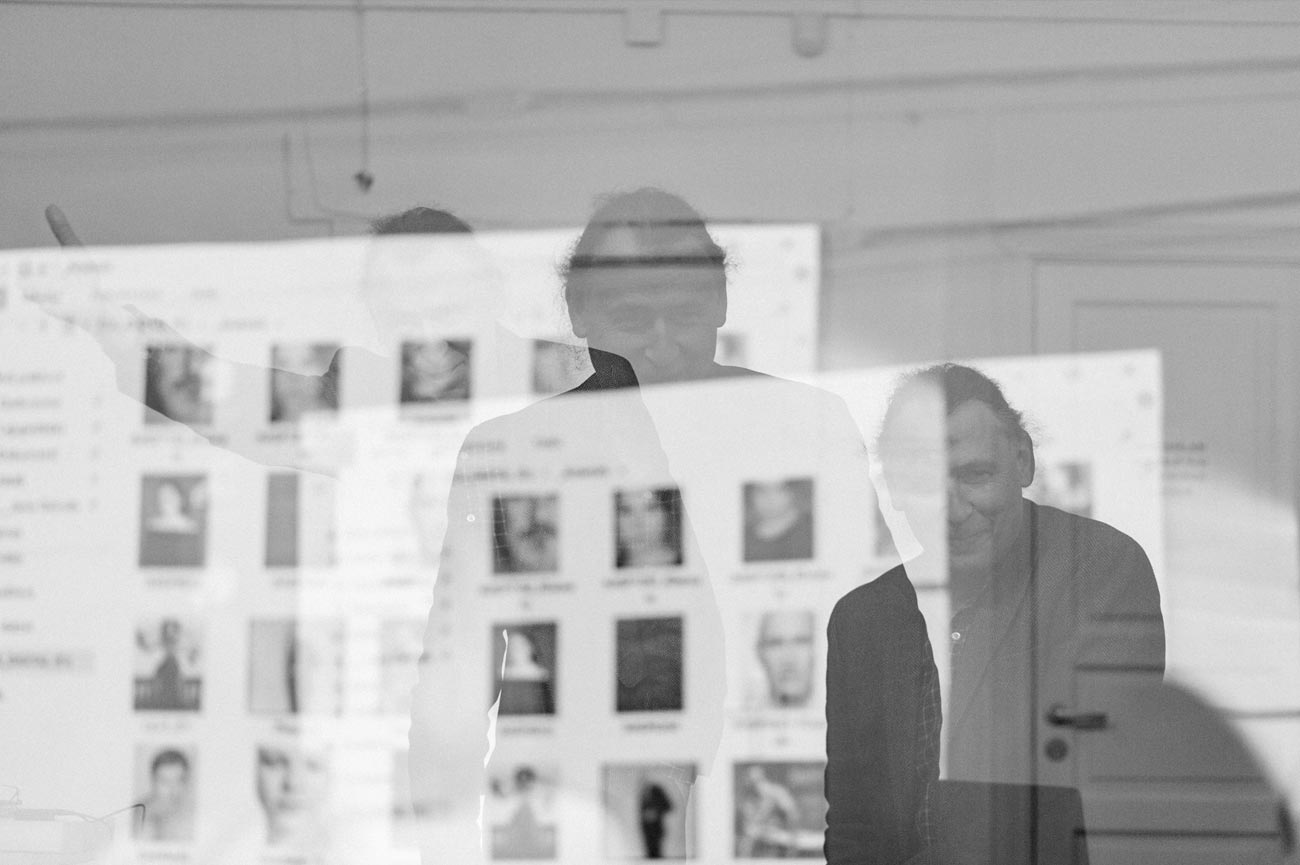Expose Film Multiple Times to Layer Images

Photo by Oskars Upenieks. Licensed under CC BY 2.0
Multiple exposure is exactly what the name suggests, exposing film more than once to form multiple images in a frame. This will create superimposed images that can create ghostly effects or add objects that were not original there. It can also be used to capture a succession of movement in a single frame.
A manual winding film camera is needed for multiple exposure, as an automatic will advance the frame before you have a chance to expose it twice. Some cameras also have a setting for single or multiple exposures to ensure a second film exposure is not taken by accident. Additionally, some cameras without multiple exposure settings will not allow you to expose the same shot twice, forcing you to advance to the next frame.
The most difficult task in this technique is finding images that will work when exposed together. For instance, different lighting, perspectives and zooms will allow the viewer to see that the image was exposed more than once. If you hope to “fool” the viewer, you’ll have to find subjects and situations that can be controlled or used together.
Avoid Overexposure by Underexposing Multiple Images
Furthermore, overexposure is a common problem with multiple exposures. By exposing the same frame to the same light source multiple times, the image will appear lighter and lighter as more exposures are made. If, for example, you are exposing two images on a single frame, you should set your first shot for a slight underexposure and the second shot for even more underexposure to ensure that there are no white hot spots from so much light exposing the film. Typically, a double exposure does not require a drastic change in exposure, but when you begin getting into three, four, or more exposures, this will become vital.
In addition to the standard multiple exposure, there are lens hoods or filters that will allow you to block one half of the frame to leave in unexposed. After exposing the first half of the film, you can rotate the filter or lens hood to allow the second half of the frame to be exposed. This will allow you to put two different images together, side-by-side. This technique can also be done in the darkroom with two different images printed on the same sheet of photographic paper.

















